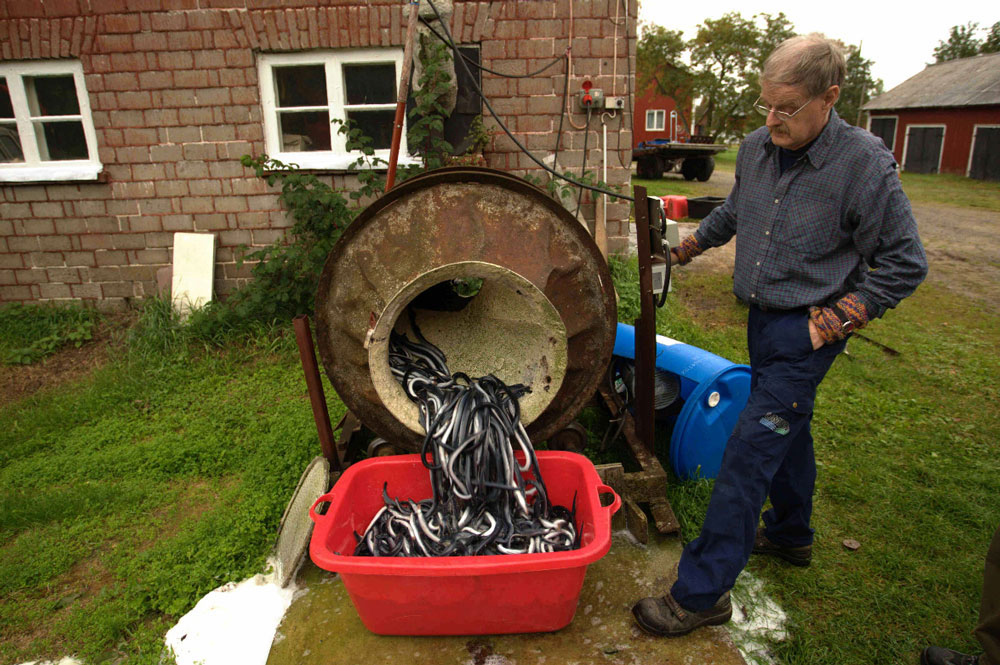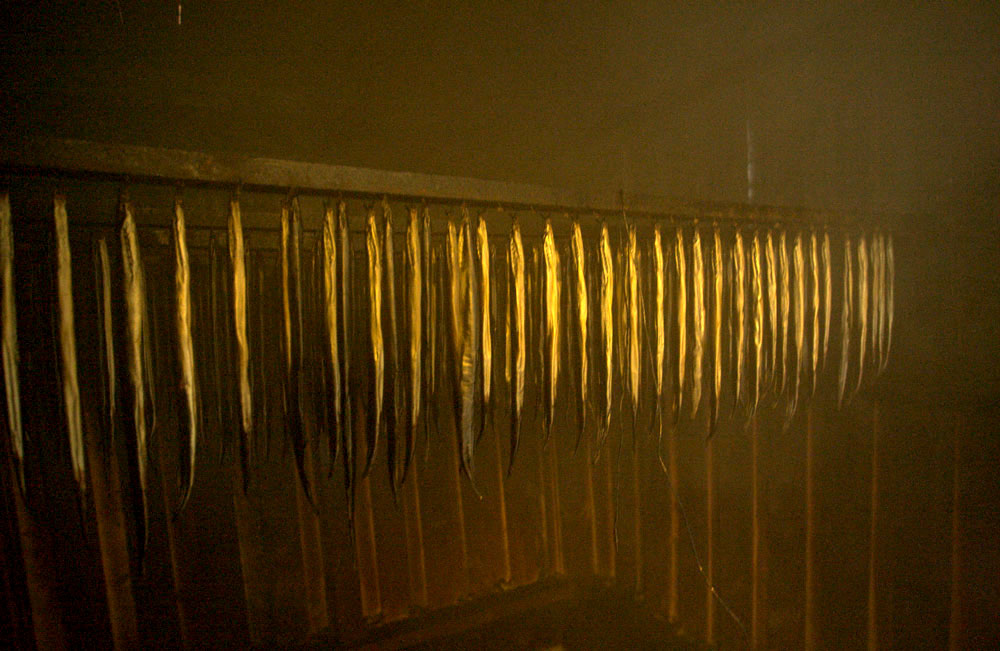- Startpage
- In English
- The Inventory
- Lamprey fishing
Lamprey fishing
Fishing for lamprey with special basket traps is a very old tradition. Smoked and salted lampreys were being supplied to the royal court as early as the 16th century.
Location: Nation wide
-nejonoga.jpg)
Photo: Kjell Sjöberg.
Up until the mid 20th century, migratory river lamprey were fished commercially in at least 25 watercourses in Norrland, from the river Dalälven and further north. In the Torne River lamprey is caught on both the Swedish and the Finnish side. The fish can migrate here without obstacles. There is greater interest in river lamprey fishing on the Finnish side , both among the public and the authorities.
Fishing has been of great economic importance and river lamprey fishing was very extensive in most rivers along the coast of Norrland. In the unregulated watercourses, fishing is taking place in the same streams as it was several hundred years ago.
There are three species of lamprey in Swedish waters, of which river lamprey is a regional speciality. Catching and eating river lamprey has been most common on the east coast, from the river Dalälven and further north. The best time is October when the moon is dark. It is primarily those who hold fishing rights who have fished for river lamprey as it involves the use of fixed gear. The fishing gear used differs somewhat on the different watercourses, from the river Dalälven in the south to the Torne River in the north, but the basic principle is the same.
The river lamprey was hot smoked until the 1950s when it instead began being grilled on an iron slab outdoors, which is now the most common way to prepare the fish. Sometimes lamprey have also been pickled in sugar and vinegar. Cold smoking is now the most common preparation method further north.
The river lamprey has previously been on the Swedish red list of endangered species, but the fishing that is conducted today is on a very small scale and is not considered a threat to the species. On the other side of the Baltic Sea, in Finland and the Baltic countries, fishing is conducted on a larger scale. The threat to the fishery and to survival of the species is instead the large power stations on the Norrland rivers that form an obstacle to all migratory fish. In rivers where power stations have had less of an impact on the ability of fish to migrate, fishing still occurs to a great extent. Catches are larger here and there are good profits to be made from the fish.
The average age of fishermen today is high but there is a strong desire to pass down knowledge to younger generations. The strong tradition and the economic importance has contributed to its survival. The fishing of river lamprey in the rivers in Norrland is a tradition that almost exclusively has been passed on from father to son. Most of those who fish this way today have a general interest in fishing.
-(2)-fiska-nejonoga.jpg)
Photo: Kjell Sjöberg.

Photo: Kjell Sjöberg.
-nejon-2.jpg)
Photo: Kjell Sjöberg.

Photo: Kjell Sjöberg.
-nejonogon-rokta.jpg)
Photo: Kjell Sjöberg.

Photo: Kjell Sjöberg.
